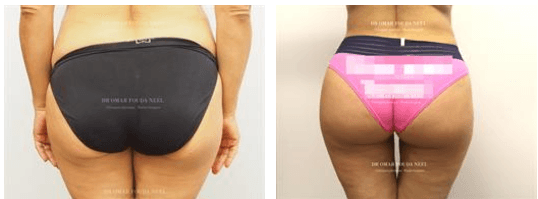The Brazilian butt lift is popular among Montreal patients because it is less invasive than a traditional butt lift. It also helps shape the abdominal area, hips, and waist. The goal of a Brazilian butt lift is to create a curvy figure and a round bottom.

What Is an Excisional Butt Lift?
This is the traditional butt lift, which is more invasive and leaves larger, although strategically hidden, scars. This procedure takes sagging skin and pulls it upwards, much like how a tummy tuck works, except that the skin is stretched in the opposite direction. The excess skin is removed, leaving the bottom less saggy, and as a result, the whole area looks trimmer and smaller.
The Two Stages of the Brazilian Butt Lift
First, fat is harvested from the abdomen to flatten the belly and define the waist. Next, the fat is injected under the skin in the buttocks to fill and reshape the butt.
To ensure a level of quality, the fat that was taken from the abdomen is processed before being injected. Reusing the fat means that the structure of the tissue needs to be disturbed as little as possible. Surgeons do the following:
- The fat is carefully harvested either by hand or through a medical vacuum
- The fat is then processed. This stage can vary depending on the method used — some doctors will add antibiotics to prevent infection and some will use a filter to prevent the inclusion of other tissue
Fat grafting is similar to getting an implant without the risk of the body rejecting the implant.
Shaping the Buttocks
Once processed, the fat can be injected using either a cannula that can be large or small, single- or multiple-holed. Ultimately, the goal is to get a rounder, higher, and plumper bottom. Using multiple injection sites not only ensures a better distribution of the fat, it also increases the absorption rate of fat cells into the body. The amount of fat transferred depends, but it usually falls into the range of 500 to 1,000cc.

Recovery
After the procedure, you will be expected to avoid sitting or lying on your back for a few weeks while your body recovers. You may also be provided with a compression garment to keep things in place as you move around during the day.
